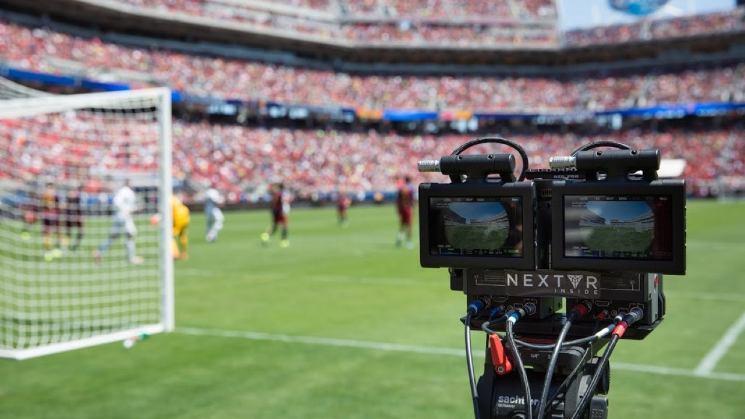Introduction to Sports Broadcasting
Sports broadcasting 스포츠중계 has undergone a remarkable journey, progressing from its origins in radio commentary to the present-day immersive, multi-platform experiences. This transformation has revolutionized fan interaction with their beloved sports, providing unparalleled access and engagement. Our exploration delves into the historical narrative, technological advancements, and future potential of sports broadcasting methodologies.
The Early Days: Radio Broadcasts
The Birth of Sports Radio
Sports broadcasting originated with radio in the early 20th century. The inaugural live sports broadcast is commonly attributed to the 1921 KDKA radio transmission of a Pittsburgh Pirates baseball match. This moment signaled the dawn of a new epoch, enabling fans to revel in the thrill of sports instantaneously, irrespective of distance.
The Impact on Fan Engagement
Radio broadcasts transformed the sports landscape, widening access for a larger audience. Fans could support their beloved teams and athletes from afar, nurturing a community spirit and shared journey.
The Transition to Television
The First Televised Sports Events
Television revolutionized sports broadcasting by introducing a new dimension. The inaugural live televised sports event showcased a college baseball clash between Columbia and Princeton in 1939. This breakthrough enabled fans to witness the unfolding action, deepening their engagement with the game.
Color Television and Instant Replay
The advent of color television in the 1960s and the introduction of instant replay in the 1970s further enriched the viewing experience. These advancements allowed for better visualization of the game and analysis of crucial moments, increasing viewer engagement and understanding.
The Digital Revolution: Cable and Satellite
The Rise of ESPN and Dedicated Sports Channels
ESPN’s emergence in 1979 signified a pivotal moment in sports broadcasting history. Being the inaugural 24-hour sports channel, ESPN revolutionized the way fans engaged with sports content by offering continuous coverage, insightful analysis, and live broadcasts.
Satellite Broadcasting and Global Reach
Satellite technology expanded the reach of sports broadcasting, enabling live coverage of international events. Fans could now watch global sporting events like the Olympics and the FIFA World Cup, breaking geographical barriers and fostering a global sports community.
The Internet Age: Streaming and On-Demand Content
The Emergence of Sports Streaming Services
The internet revolutionized sports broadcasting, introducing streaming services such as ESPN+, DAZN, and NBC Sports Live. These platforms provide fans with the flexibility to enjoy live sports and on-demand content across multiple devices, at their convenience.
Social Media and Fan Interaction
Social media plays a vital role in sports broadcasting, with platforms such as Twitter, Facebook, and Instagram providing real-time updates, behind-the-scenes content, and direct interaction with athletes and teams. This enhances fan engagement and creates a personalized experience.
Technological Innovations Enhancing the Viewing Experience
High-Definition (HD) and 4K Broadcasting
High-definition and 4K broadcasting have significantly improved the visual quality of sports broadcasts. These technologies offer crystal-clear images, bringing fans closer to the action and enhancing their overall viewing experience.
Virtual Reality (VR) and Augmented Reality (AR)
Virtual reality (VR) and augmented reality (AR) are transforming sports broadcasting. VR creates immersive experiences, putting fans right into the stadium. On the other hand, AR enhances the viewing experience by overlaying real-time data like player stats and game analysis.
Drones and Aerial Footage
Drones have added a new perspective to sports broadcasting by capturing aerial footage and dynamic angles. This technology provides unique views of the action, particularly in sports like football, soccer, and racing, enhancing the overall visual storytelling.
The Role of Data and Analytics
Real-Time Statistics and Analysis
The infusion of real-time data and analytics into sports broadcasting has revolutionized fans’ comprehension and interaction with the game. Enhanced metrics, player statistics, and comprehensive analysis are seamlessly integrated into broadcasts, offering profound insights and enriching the overall viewing experience.
Predictive Analytics and AI
Predictive analytics and artificial intelligence are shaping the future of sports broadcasting. These technologies can predict game outcomes, and player performance, and even suggest optimal camera angles, making broadcasts more informative and engaging.
The Future of Sports Broadcasting
5G and Enhanced Connectivity
The introduction of 5G technology is poised to transform sports broadcasting, offering enhanced speed and reliability. This advancement will facilitate smooth streaming, instantaneous data integration, and heightened engagement for spectators.
Personalized Viewing Experiences
The future of sports broadcasting lies in personalization. Advanced algorithms and AI will tailor content to individual preferences, offering customized viewing experiences, interactive features, and exclusive behind-the-scenes access.
Blockchain and Secure Streaming
Blockchain technology can potentially enhance the security and transparency of sports broadcasting. It can provide secure streaming, prevent piracy, and ensure fair revenue distribution among content creators.
Conclusion
The progression of sports broadcasting methods has fundamentally altered the way fans interact with and enjoy sports. From the inception of radio to the contemporary immersive, cross-platform encounters, technological progressions have consistently boosted the availability, caliber, and engagement of sports content. As we gaze ahead, advancements such as 5G, VR, AR, and AI hold the potential to redefine the sector, providing fans with increasingly tailored and captivating experiences.

